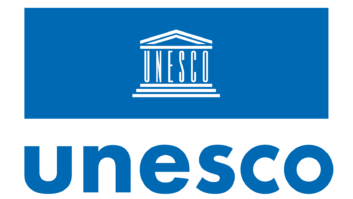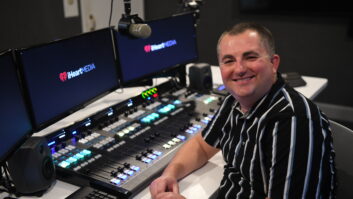The 80+ Members of the WorldDAB Forum Met Recently to Consider Digital Radio’s Status Around the Globe
The WorldDAB Forum is the standards body that manages and promotes the Eureka-147 DAB format. It holds an annual General Assembly meeting to assess the current state of DAB worldwide.
This year – the Forum’s tenth – the venue for this meeting was Barcelona, Spain, one of the world’s loveliest places. Yet the international DAB picture presented there wasn’t pretty, at least not throughout.
DAB’s significant and growing success in the United Kingdom remains an exception to the international rule for the format. Most other countries are struggling to keep their DAB services afloat, and a few are actually shutting down DAB operations. Some even admit to watching the fate of IBOC in the United States as a possible future alternative.
The Catalonian state government’s hosts of the conference used medical analogies to describe DAB’s condition in Spain and elsewhere as being “ill,” “hurting all over” and “suffering from anemia.” Lack of listener demand, low availability of receivers and poor building penetration were among the reasons cited, yet the government pledged continuing support for the format with hopes that these obstacles can be overcome.
Indeed the four DAB services currently provided in the Barcelona area are quite impressive, providing a rich and high-quality array of music, news and cultural affairs (although much of the content is duplicated on analog radio there). These channels provided ample content – albeit largely incomprehensible to non-Catalan speakers -to feed the numerous DAB receivers being demonstrated at the event. Meanwhile, Catalonian officials acknowledged the need for more advanced receivers integrated with cell phones, PDAs and the like, establishment of more DAB-only content services and expanded marketing efforts.
Reports from country after country repeated this mantra, with the exception of the U.K., whose delegates provided advice, recommendations and even specific formulas for success.
The latter could be summarized in a three-step program: 1) Broadcasters offer new DAB-only services; 2) Manufacturers offer cheap receivers; 3) Marketing and cross-promotion efforts are established to educate consumers about the new system. Of course, this counsel applies to any new broadcast format, whether it is DAB, IBOC, DTV or whatever.
A variation of this approach advised that “four forces (commercial broadcasters, public broadcasters, manufacturers and government) must work to convince the fifth (consumers) to adopt DAB,” adding that while the four form their coalition and do their work, they should not expect DAB to appear successful, although ultimately it will become so. This prudent guidance on managing expectations is also worth noting by all emerging media technologies.
Counting our blessings
Some interesting market contrasts were presented at the meeting, some of which are clearly at work in the current European DAB debacle.
For example, while many European countries have established DAB, driven largely by respective government policies, the situation differs from country to country. Despite the European Union’s attempt to aggregate a market that is globally competitive, there is as yet no uniform digital radio policy across the EU. (This is nearly akin to U.S. broadcast regulation and deployment being driven by individual states rather than federal policy – a scary thought.)
Because Asian consumer electronics manufacturers are interested in global or regional product trends rather than those limited to individual countries, these companies generally have held back from deploying DAB receivers, even into the hot U.K. DAB market. In fact, a large part of the U.K.’s success with DAB can be traced to a homegrown receiver initiative, with almost all current receivers moving off the shop shelves coming from U.K.-based manufacturers. Meanwhile, upcoming changes in the EU’s leadership provided some hope for improvement here.
Another fascinating situation is that of Australia, also a lackluster DAB environment to date. That country’s delegate pointed out that while the U.K. has 359 radio stations serving 59 million people, and the United States has some 12,000+ stations for its 259 million inhabitants, Australia currently has about 2,600 stations in a country with a population of only 21 million, and rather widely dispersed at that. This provides an economic condition in which the viability of conversion to DAB is severely constrained, particularly when additional DAB-only services are contemplated.
Then consider Italy, where the DTV vs. DAB battle looms large. A law there requires that television broadcasters establish their DTV services and switch off analog TV by the end of 2006, and only VHF spectrum has been allocated for the digital channels. This is some of the same spectrum that had earlier been allocated for DAB, so the Italian public broadcast agency RAI has recently been forced to shut down its DAB services (on TV channel 12, as used by several other European countries for DAB service, including the U.K.), in order to provide adequate spectrum for its mandated new DTV services. (Note that the Italian government is led by Silvio Berlusconi, who built his fortune as the country’s leading TV broadcasting mogul.)
Darkest before dawn
The mood of the conference nevertheless was upbeat, most likely because veteran delegates have spent most of the last decade getting used to gloom and doom, and in fact, the U.K.’s recent experience shows for the first time that there is a real possibility for successful outcome.
Other positive reports came from the Netherlands, where state transmission services provider NOS has recently begun DAB service, and from Canada, where tests of new MPEG-1 Audio Layer 2 encoders have shown that substantial improvements in audio quality (and/or reduction in bit rates) are possible with full backward compatibility.
The DAB format also is being revitalized by its adoption as the foundation for Korea’s Digital Multimedia Broadcasting (DMB). A consortium of Korean organizations is currently working with the WorldDAB Forum to produce a compatible worldwide standard for such expanded DAB services.
Additional light was cast by a presentation exhorting broadcasters to think about gradually weaning themselves from the exclusive delivery of their own content, and working with other service-only providers (such as wireless telecom operators) to provide multiple venues of access to their programming.
The merger of two large U.K. commercial radio groups, GWR and Capital Radio, both quite active in the DAB space, had just been announced prior to the General Assembly, and this created quite a buzz among the attendees, including rumors of an impending acquisition attempt by Clear Channel.
Finally, the WorldDAB Forum itself is experiencing strong growth, targeting 100+ members by its next General Assembly. The experience reflected at this year’s meeting clearly shows that the success of digital radio – in any environment – requires collaboration, investment (both personal and financial) and above all, perseverance.












